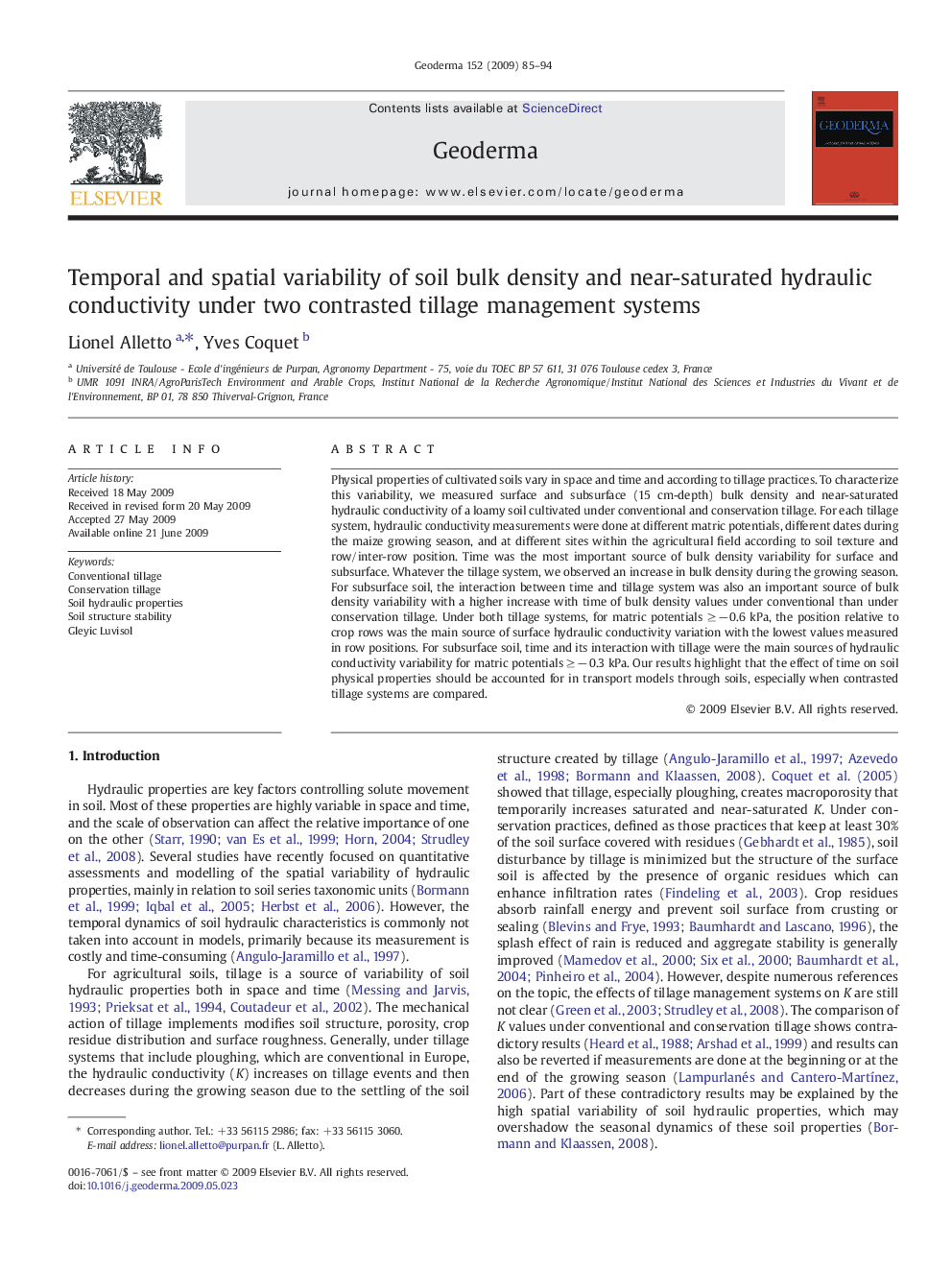| Article ID | Journal | Published Year | Pages | File Type |
|---|---|---|---|---|
| 4574612 | Geoderma | 2009 | 10 Pages |
Physical properties of cultivated soils vary in space and time and according to tillage practices. To characterize this variability, we measured surface and subsurface (15 cm-depth) bulk density and near-saturated hydraulic conductivity of a loamy soil cultivated under conventional and conservation tillage. For each tillage system, hydraulic conductivity measurements were done at different matric potentials, different dates during the maize growing season, and at different sites within the agricultural field according to soil texture and row/inter-row position. Time was the most important source of bulk density variability for surface and subsurface. Whatever the tillage system, we observed an increase in bulk density during the growing season. For subsurface soil, the interaction between time and tillage system was also an important source of bulk density variability with a higher increase with time of bulk density values under conventional than under conservation tillage. Under both tillage systems, for matric potentials ≥ − 0.6 kPa, the position relative to crop rows was the main source of surface hydraulic conductivity variation with the lowest values measured in row positions. For subsurface soil, time and its interaction with tillage were the main sources of hydraulic conductivity variability for matric potentials ≥ − 0.3 kPa. Our results highlight that the effect of time on soil physical properties should be accounted for in transport models through soils, especially when contrasted tillage systems are compared.
